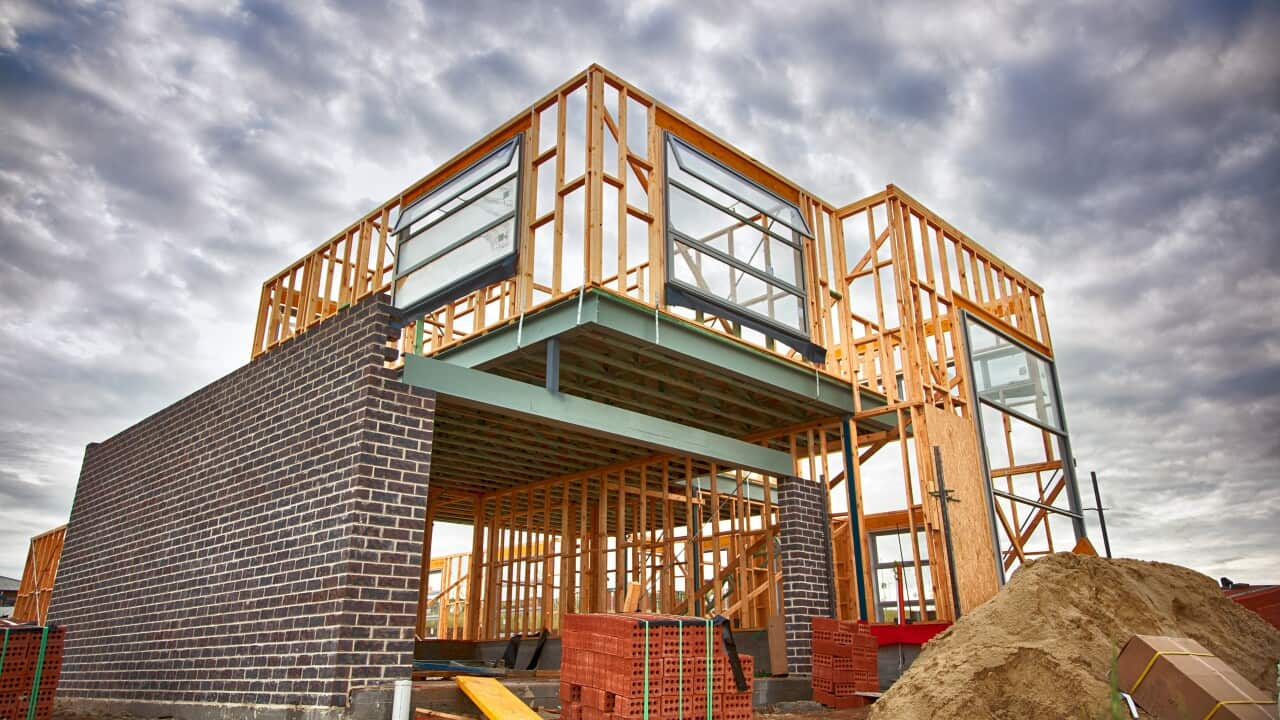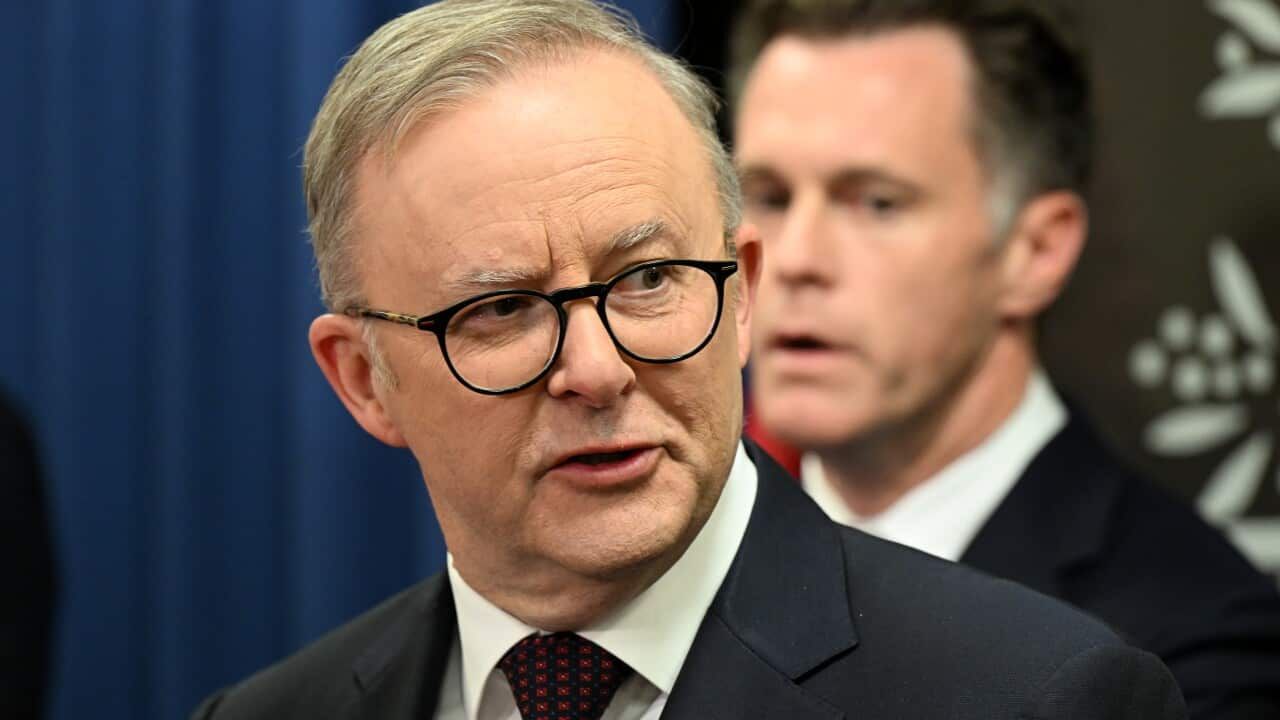Key Points
- About 43,000 new dwellings are being built in Australia per quarter.
- The federal government has said 1.2 million new residential builds will be compete by 2029.
- According to BuildSkills Australia, 90,000 more workers need to be found in the next three months to meet that target.
The construction industry's top representative body says Australia needs to consider migrant workers to address chronic tradesperson shortages.
According to BuildSkills Australia, 90,000 extra construction workers would need to be found in the next three months for the government to meet its target of 1.2 million new homes by 2029.
Robert Sobyra from BuildSkills Australia said while new residential dwellings were being built at a rate of 43,000 per quarter, 60,000 would need to be built starting from the first quarter of the new financial year to meet the government's target.
The head of Master Builders Australia, Denita Wawn, said those numbers were impossible in the current circumstances.
She argued more needed to be done to attract people to the industry over the long term, .
And in the short term, Wawn said Australia should look overseas.
"We need to be looking at migration solutions and particularly quick migration solutions around, how are we using effectively our free trade agreements?" she said.
"Also recognising this is not an Australian-specific problem, this is a worldwide problem, and we're seeing poaching occurring at a rapid rate, particularly between English-speaking Western democracies.
"The issue then is, how do we attract people from a wider base, ?"
Wawn said many foreign workers with construction skills would likely choose Canada over Australia.
"Countries like Canada, which are comparable in lifestyle and facing a similar workforce shortage, are more enticing options because they allow simple work permits in building and construction, as well as a more direct route to permanent residency even without a job offer prior to emigrating."

Experts have called for more women and migrants to work in construction in order to boost overall productivity. Source: Getty / JulieanneBirch
"To grow and reskill our workforce domestically will take time and in the short term, to increase the sector’s capacity, further reforms to the migration system are needed, including reducing application fees, better recognition of overseas trade qualifications, and lowering English language test requirements."
Wawn said Master Builders was working closely with the federal government on building and construction workforce shortages.
"This challenge has been decades in the making and will need cooperation and reform at a federal, state and territory government level," she said.
Wawn said other solutions were needed in the meantime.
"We've got to focus on those who are currently in the country, but their skills aren't recognised," she said.
"Easier access to English language education and accessible coaching for migrants to navigate the system will help, in addition to subsidising the cost of filling skills or qualifications gaps that might exist between a migrant's home qualification and Australian requirements."
These calls come as the federal government attempts to crack down on net overseas migration in an overhaul of the system.
Sobyra is the executive director of research and planning for BuildSkills Australia, an industry-owned organisation that was established by the federal government to work with industry to find solutions to the workforce challenges facing construction.
He said the "actual quantity of migrants" coming to Australia was not necessarily the main issue that needs to be addressed for the construction industry to be better supported, but the "composition of the migration profile".
"The issue is, at the moment under current migration settings only about 3 per cent of migrants can actually work in the building and construction industry, and we need that percentage to be far higher."

BuildSkills Australia says that without more construction workers, it's unlikely the 1.2 million new dwellings by 2029 that the federal government has set as a target will be built. Source: Getty / xavierarnau
"We need to be out there really prioritising people who can work in construction, particularly the skilled trades and the engineers, those sort of occupations that have a very high barrier to entry.
"There's not much point in bringing unskilled labour because we can source them from within the local population, but those sort of occupations that need three or four years of training to become qualified, they're the ones that you want to front-load the migration system with."
Sobyra said reducing complexities in the visa process and prioritising the required workers were all part of "live conversations at the moment in the context of the new national migration strategy".
When questioned about the matter, Housing Minister Julie Collins pointed to increased fee-free TAFE places, aimed at getting more people into apprentices, and said work was ongoing to find ways to help deliver on the 1.2 million promised dwellings.
She said there was "three-and-a-half billion dollars on the table for states and territories to deliver on those."
"We know we've got a lot of work to do, we've got an ambitious agenda, that's why we're getting on with the job," Collins said.




